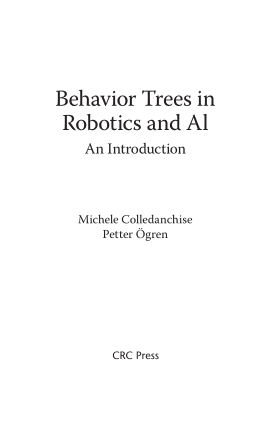This book is intended to serve as a textbook for advanced juniors and seniors and first-year graduate students in computer science and engineering. The reader is not expected to have taken a course in artificial intelligence (AI), although the book includes pointers to additional readings and advanced exercises for more advanced students. The reader should have had at least one course in object-oriented programming in order to follow the discussions on how to implement and program robots using the structures described in this book. These programming structures lend themselves well to laboratory exercises on commercially available robots, such as the Khepera, Nomad 200 series, and Pioneers. Lego Mindstorms and Rug Warrior robots can be used for the first six chapters, but their current programming interface and sensor limitations interfere with using those robots for the more advancedmaterial. A background in digital circuitry is not required, although many instructors may want to introduce laboratory exercises for building reactive robots from kits such as the RugWarrior or the Handy Board. Introduction to AI Robotics attempts to cover all the topics needed to program an artificially intelligent robot for applications involving sensing, navigation, path planning, and navigating with uncertainty. Although machine perception is a separate field of endeavor, the book covers enough computer vision and sensing to enable students to embark on a serious robot project or competition. The book is divided into two parts. Part I defines what are intelligent robots and introduces why artificial intelligence is needed. It covers the “theory” of AI robotics, taking the reader through a historical journey from the Hierarchical to the Hybrid Deliberative/Reactive Paradigm for organizing intelligence. The bulk of the seven chapters is concerned with the Reactive Paradigm and behaviors. A chapter on sensing and programming techniques for reactive behaviors is included in order to permit a class to get a head start on a programming project. Also, Part I covers the coordination and control of teams of multi-agents. Since the fundamental mission of a mobile robot involves moving about in the world, Part II devotes three chapters to qualitative and metric navigation and path planning techniques, plus work in uncertainty management. The book concludes with an overview of how advances in computer vision are now being integrated into robots, and how successes in robots are driving the web-bot and know-bot craze. Since Introduction to AI Robotics is an introductory text, it is impossible to cover all the fine work that has been in the field. The guiding principle has been to include only material that clearly illuminates a specific topic. References to other approaches and systems are usually included as an advanced reading question at the end of the chapter or as an end note. Behavior-based Robotics10 provides a thorough survey of the field and should be an instructor’s companion.







